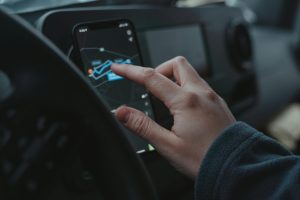Cybersecurity in Connected Cars: Fighting $500M Hacker Threats
The rise of connected cars has led to a number of technological advancements and conveniences for drivers. However, with this increased connectivity comes the potential for cybersecurity threats. In recent years, the automotive industry has been targeted by hackers, resulting in millions of dollars in damages. In fact, according to a report by Upstream Security, automotive cybersecurity threats are estimated to cost the industry over $500 million in damages by 2023. With this staggering figure in mind, it’s clear that protecting connected cars from cyber attacks is crucial. In this article, we’ll explore the current state of cybersecurity in connected cars and how the industry is fighting against the rising threat of hackers.
The Rise of Connected Cars
Connected cars, also known as “smart” or “internet-connected” cars, refer to vehicles equipped with internet access and wireless technology that allows them to communicate with other devices and networks. This connectivity has enabled drivers to access a wide range of features, such as real-time traffic updates, remote vehicle control, and even autonomous driving. In addition, connected cars are equipped with sensors that collect data on the vehicle’s performance, location, and driver behavior.
While these features offer a convenient and efficient driving experience, they also open up new avenues for cyber attacks. With more and more connected cars on the road, the potential for cyber threats increases, making cybersecurity a top priority for the automotive industry.
The Current State of Cybersecurity in Connected Cars
Despite the growing number of connected cars, the level of cybersecurity in the automotive industry is still relatively low. Many vehicles lack proper security protocols and are vulnerable to cyber attacks. In some cases, hackers have been able to gain access to a vehicle’s systems through its internet-enabled features, such as infotainment systems or remote keyless entry.
Cybersecurity experts have also found vulnerabilities in the communication networks used by connected cars. These networks lack proper encryption, allowing hackers to intercept and manipulate data being exchanged between the vehicle, cloud servers, and other devices. This can result in hackers gaining control of a vehicle’s steering, brakes, or other critical systems.
The Threat of Malware
Malware, or malicious software, is one of the biggest threats to connected cars. It can be introduced to a vehicle’s systems through various means, such as a compromised USB drive or a hacked software update. Once inside the system, malware can disrupt or manipulate the vehicle’s operations, putting drivers and passengers at risk.
Carmakers have also faced challenges in addressing and fixing these vulnerabilities. With new software and updates being released all the time, it’s challenging to keep up with the ever-changing threat landscape. This puts the responsibility on car manufacturers to continually monitor and update their systems to protect against cyber attacks.
How the Automotive Industry is Fighting Against Cyber Threats
Recognizing the severity of the issue, the automotive industry has taken significant steps to improve cybersecurity in connected cars. Manufacturers are implementing specialized security features and protocols to protect against cyber threats. They are also forming partnerships with technology companies and cybersecurity firms to develop advanced security solutions.
Furthermore, the industry is working towards creating a secure communication network specifically designed for connected cars. This network will use advanced encryption and authentication methods to prevent unauthorized access to a vehicle’s systems.
The Role of Government Regulations
In addition to manufacturers’ efforts, government agencies are also stepping in to regulate cybersecurity in connected cars. For instance, The U.S. Department of Transportation has developed a set of guidelines for automotive cybersecurity, outlining best practices for manufacturers to follow. In Europe, the European Union has introduced the General Data Protection Regulation (GDPR), which sets strict requirements for the collection and use of personal data in connected vehicles.
The Importance of Collaboration
While there have been significant advancements in automotive cybersecurity, the battle is far from over. As technology continues to evolve, so will the tactics used by hackers. To stay ahead of the game, it’s crucial for the automotive industry to collaborate and share knowledge on cybersecurity threats and solutions.
Moreover, drivers also play a vital role in ensuring the security of their connected vehicles. They should be aware of the risks and take necessary precautions, such as regularly updating their vehicle’s software and avoiding connecting unauthorized devices to the system.
In Conclusion
The rapid growth of connected cars brings numerous benefits, but it also poses significant cybersecurity threats. The automotive industry must take proactive steps to safeguard connected vehicles from potential cyber attacks. With strong government regulations, collaborations, and continuous efforts towards improving security, we can create a safer and more secure driving experience for everyone.











